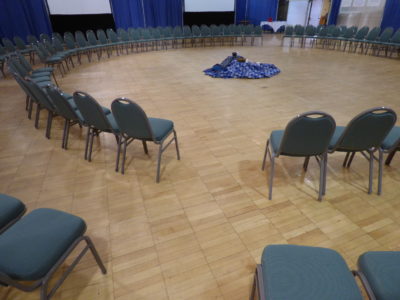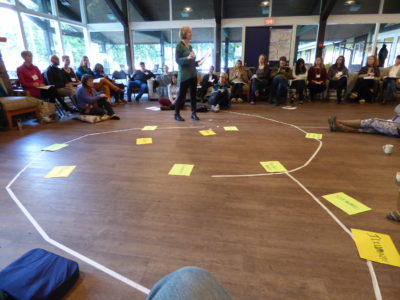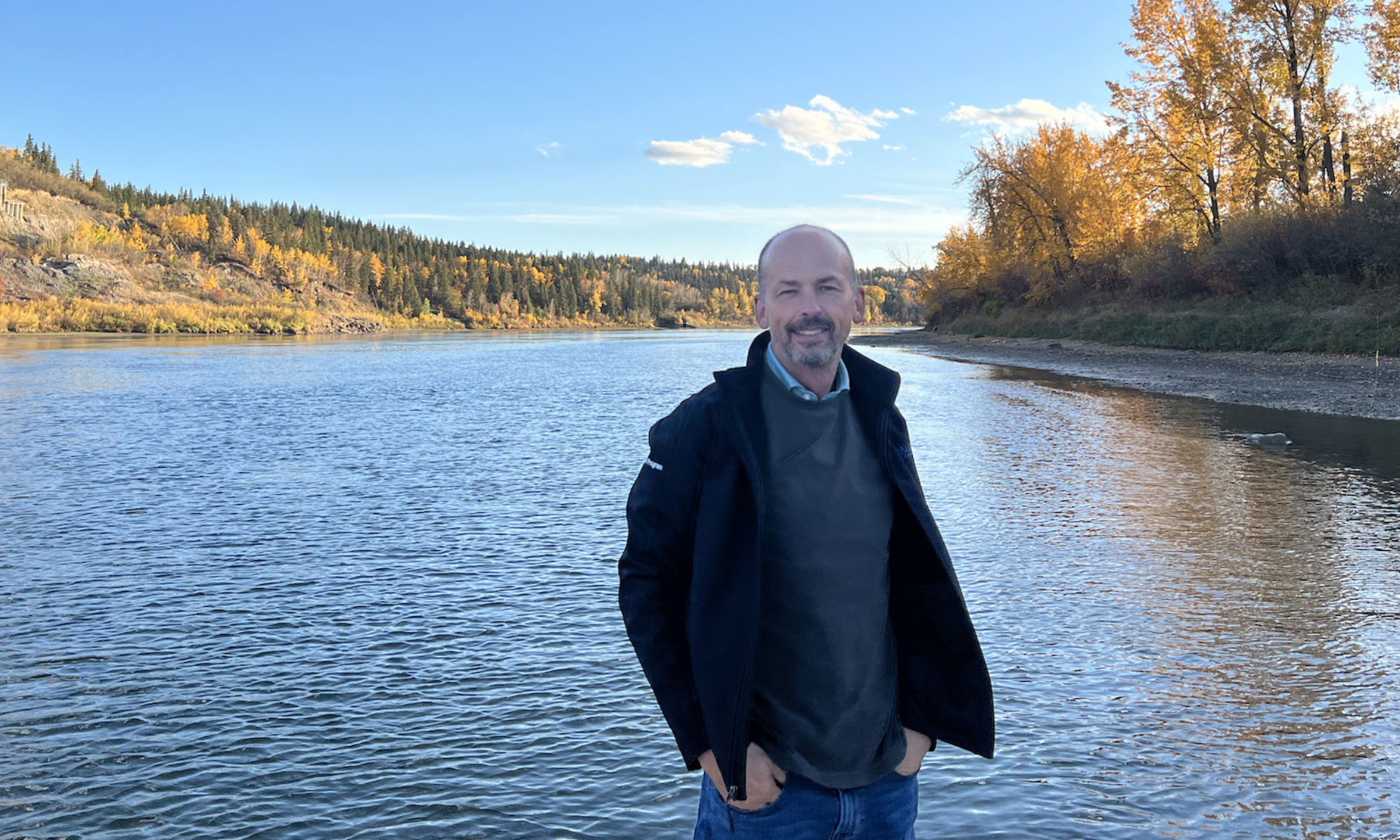
I like a lot of the things about this photo, taken last week at the start of the United Church of Christ, Central Pacific Conference (CPC) Annual Meeting that I got to cohost. I like its cleanness — ready for people that would soon start arriving. I like its center, arranged by colleague and friend Kelly Ryan — multi-layered with cloth, bowls, and candles. I like the rim that is a double circle — this one was arranged for 140 people. Yes, it impacted people. When you arrive used to a podium, round dinner tables for eight, and a stack of papers, a clean circle like this makes you rethink what is about to happen.
One of the dynamics that I like to challenge in participative leadership is how to work with large groups. Some hold a few premises underneath — that you can’t do meaningful participative leadership with large groups. The group is too big. It’s too complicated to have so many small tables. You can’t harvest with such a large group. There are too many voices to hear. These are all good, honest concerns. However, I find myself unwilling to accept the premises. I’m too stubborn probably. I’d like to think stubbornly imaginative, enough to explore other ways. And my direct experience in working with large groups (up to 1,500 — but more commonly with 150-200) points to the opposite.
What I’ve learned, and felt reconfirmed last week with CPC, is that in large groups there is more dependence on spirit — feeling what is happening, rather than literal observation of everything. There is more dependence on sensing (even welcoming) the invisible among people than on the capturing of every word. Here’s the kicker by the way — this is true in all groups; it’s just more obvious in larger groups.
The larger the group means more reliance on feeling the room. With a faith community, it can be easier to do this. They are typically quite accustomed to welcoming the invisible in and among us. But the point, in and out of faith communities, is that, as leaders, we are restoring an ability to see and feel the whole of what is happening in the group. Engaging together. Improving our skill so notice what is emerging. It means that when you have a good partner conversation, though you don’t know what is said in all the other partner conversations, you can imagine that they had a similar quality to what you just had with your partner.
Possible to work with big groups, intimately, and participatively? Absolutely — and because of people like those at the CPC Annual Meeting last week in Pendleton, OR, I don’t even need to say it stubbornly.





